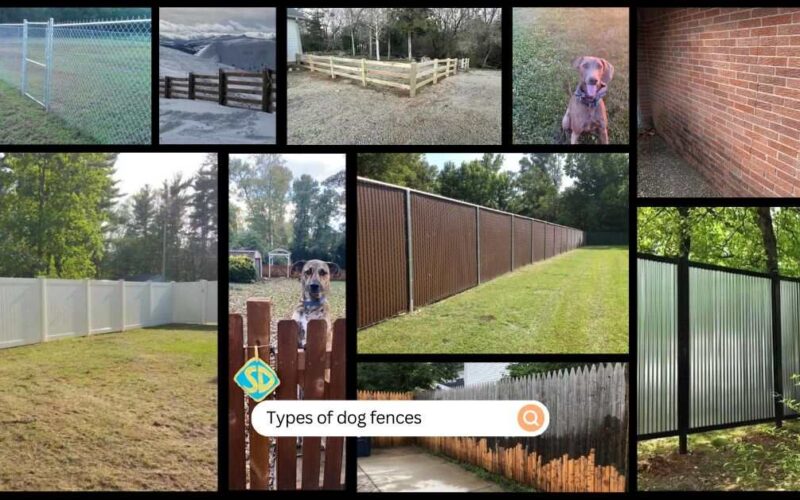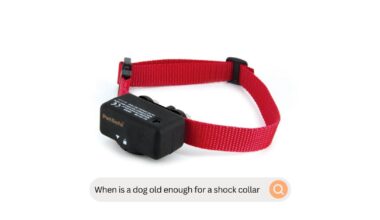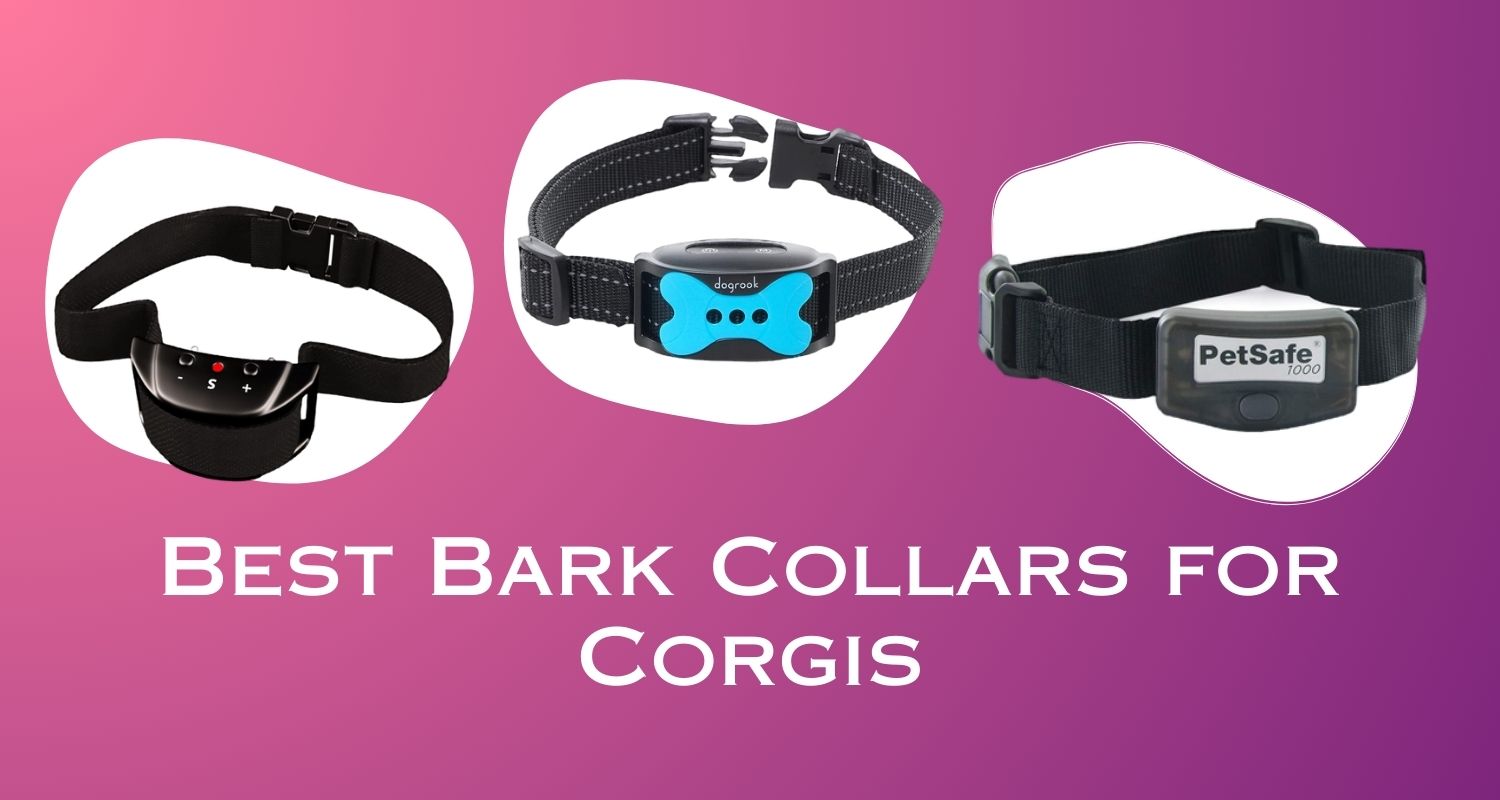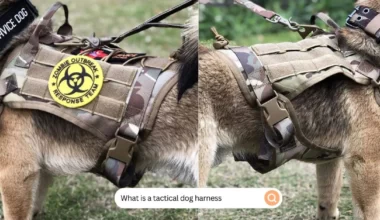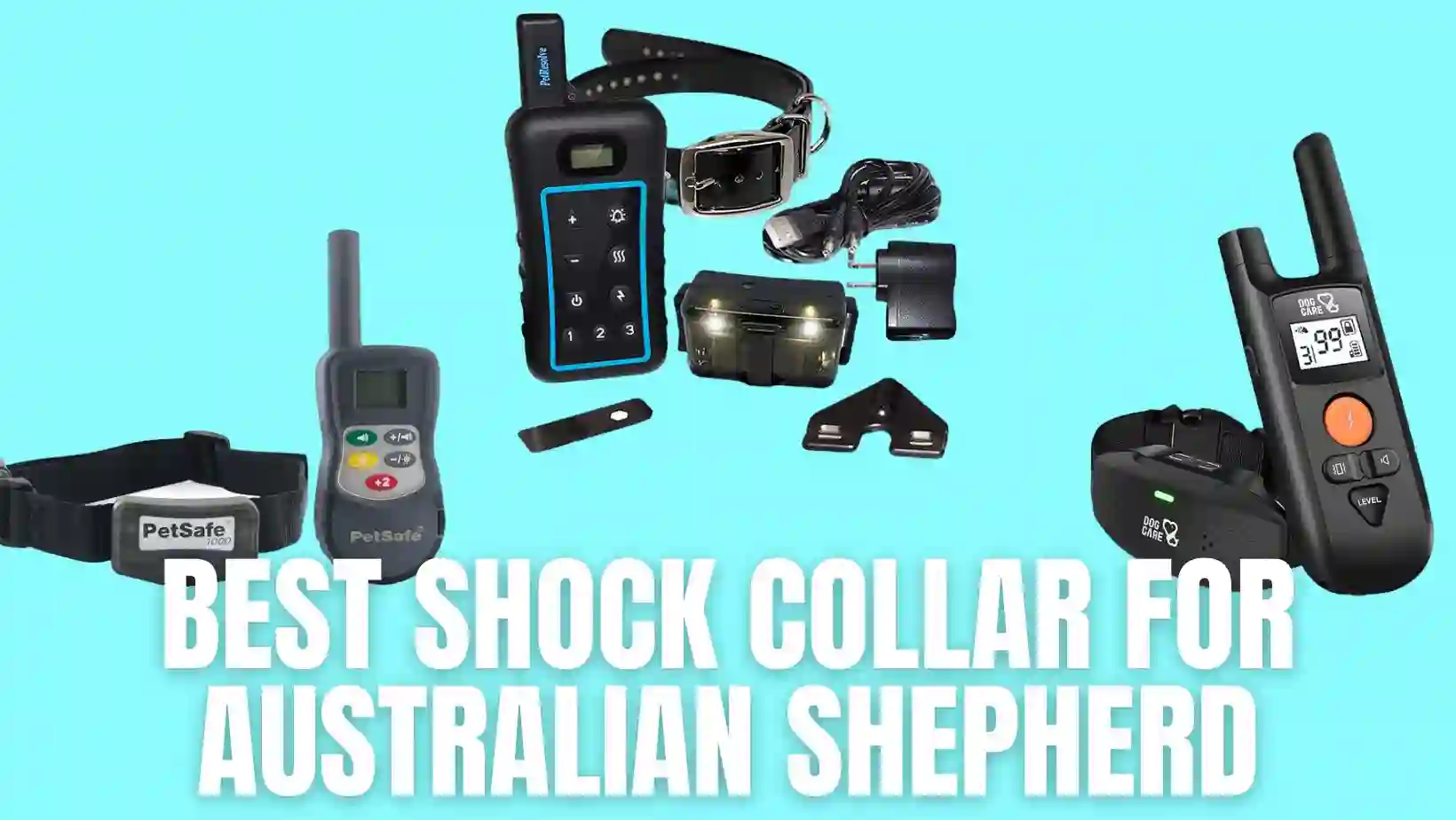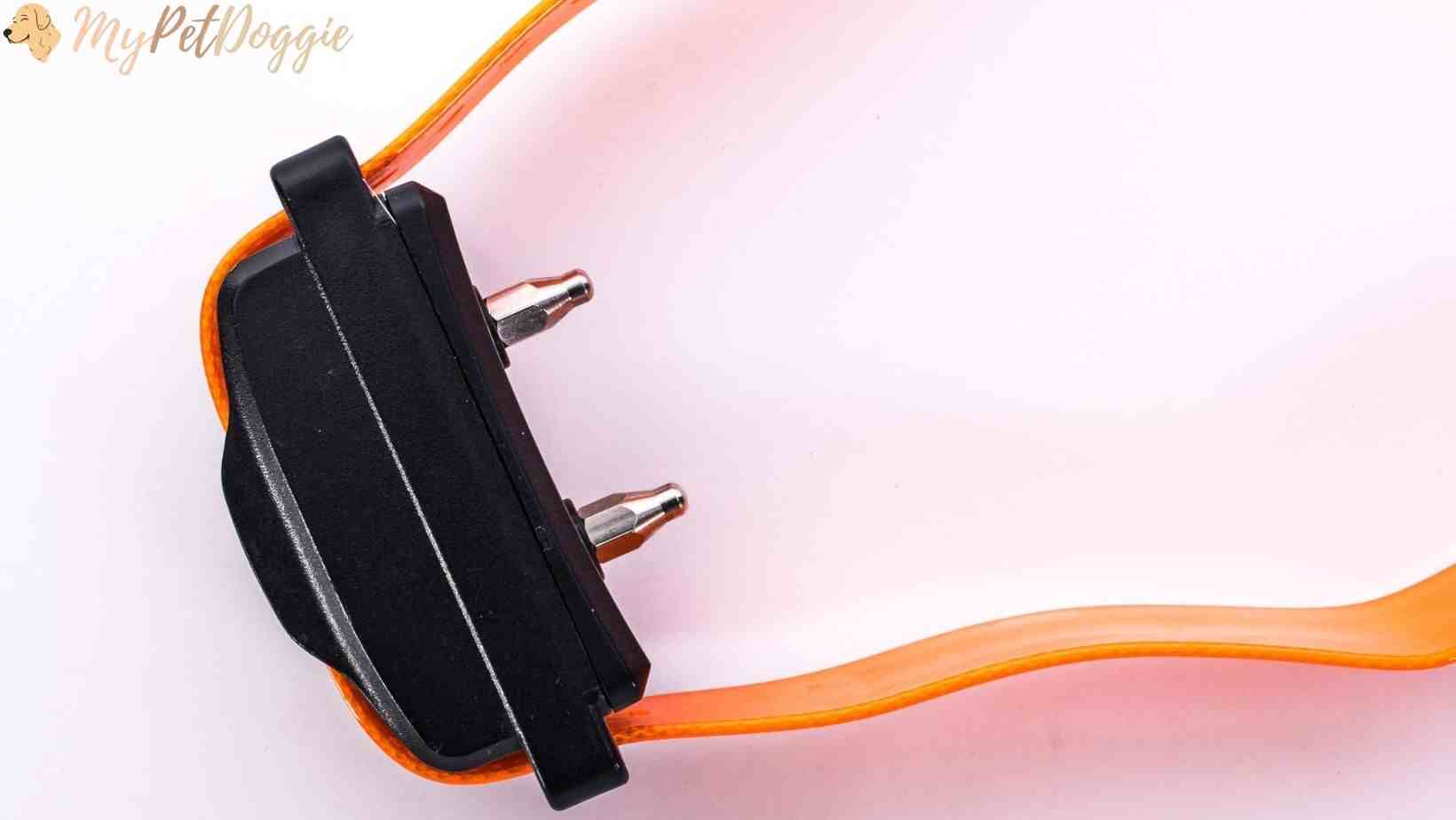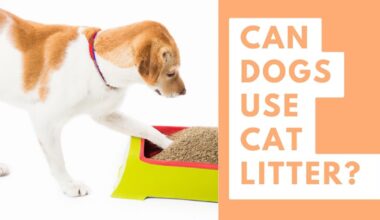About the Author: Nettie Finley, the Professional Dog Trainer at MyPetDoggie. Specializing in behavior rehabilitation, Nettie leads our team with her effective training techniques. As a certified canine behaviorist, she brings transformative change to challenging behavior cases. Her experience and expertise elevate our content, providing practical, insightful training advice for our readers. Also, she loves her Cavapoo!
When you are having a pet dog at your home, you definitely think of its safe and secure environment to roam about. Having a suitable fence is a possible solution by which your dog, at the same time, can play and escape down the street or get hurt.
Choosing the right fence for your pet is a challenging task as there are so many types of dog fences available in the market.
In this article, I will explain the different types of dog fences that are available in the market. Scroll down to read more about the type that fits the needs of your furry friend.
13 Different Types of Dog Fences
- Chain-link fence
- Vinyl fence
- Wooden dog fence
- Metal fence
- Picket fence
- Wire mesh fence
- Snow fence
- Split rail fence
- Wireless dog fence
- Brick fence
- Portable fence
- Indoor dog fence
- Invisible fence
Chain-link fence
Chain link fences are a popular choice as far as durability is concerned. It is mostly chosen by the dog owners who are tight on budget also. These fences are made from a diamond pattern of galvanized steel wires.
The visibility of the fence helps to satisfy your dog’s curiosity and boredom to look around and not feel imprisoned.
One of the key benefits of chain-like fences is that they are easy to install and require minimal maintenance which makes them a popular choice among types of dog fences.
The steel material provides resistance to rust and corrosion. Moreover, the diamond pattern makes air circulation easy for your dog.
There is a security concern for the smaller breeds as there are gaps between the steel-constructed fence from where the naughty little breeds may get stuck or hurt themselves. As a solution to this problem, you can use smaller diamond patterns or install additional barriers to close these small escape routes.
One of the downsides of these types of fences for dogs, that I personally feel, is that it may be aesthetically unpleasant and may violate the pretty look of your house. To cope up with this issue, you can use various coatings and colors to customize the fence as per your own choice.
On the whole, chain-like fences are budget-friendly and a good option to consider among all the types of dog fences. However, it is advisable to consider your dog’s behavior, size, and jumping habits before making a purchase.
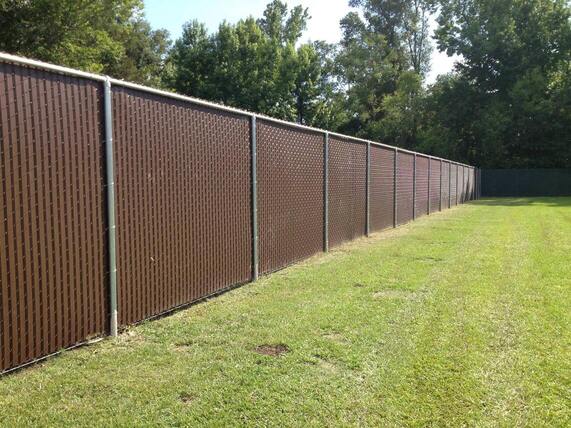
Pros
Cons
Vinyl fence
Vinyl fences are made from a weather-resistant material i.e.; PVC (polyvinyl chloride) which makes it a wise choice among dog owners searching for different types of fences for dogs.
They have a visual appeal that matches your house’s exterior design. They come in different styles that resemble traditional wood, stone or even wrought iron give a compelling look. But unlike traditional wood, they do not require extra cost of maintenance on painting or sealing. A simple soap wash cleans it with no effort.
Vinyl fences are smooth and non-porous which makes them safe from moisture, rot, and insects. There are no sharp edges or screws from where your pet may get hurt. You know, some dogs are naturally naughty and habitual of scratching things and climbing the fence.
The sturdy construction of the vinyl panels keeps your pet safe from chewing or breaking through the fence. Although training should be given to dogs to remain within the enclosed area.
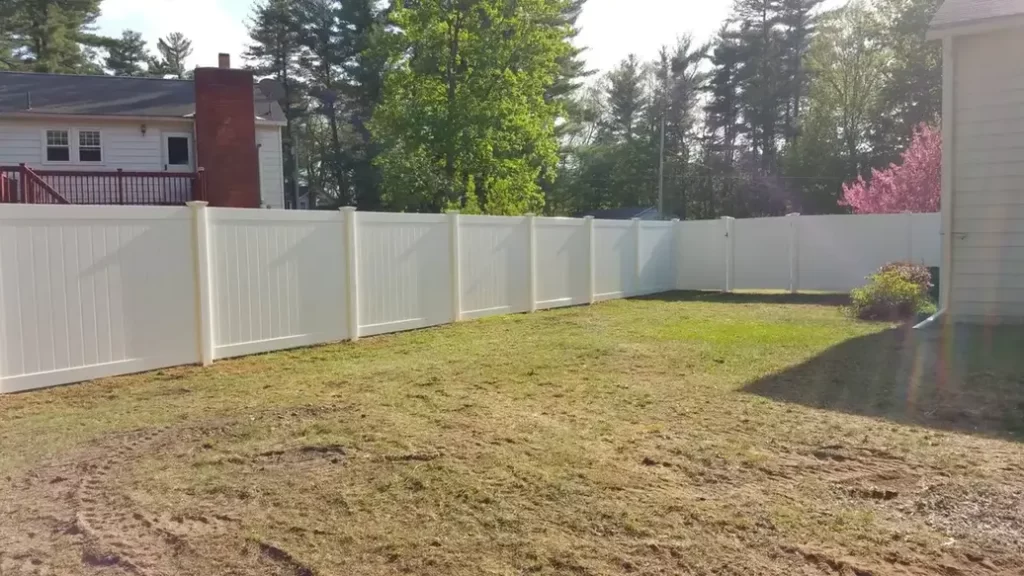
Pros
Cons
You might be interested in: Discover which dog breeds are most frequently stolen and how to protect your pet.
Wooden dog fence
Wooden fences are a combination of beauty and functional enclosure. They can blend with the outdoor environment and enhance the appearance of your house.
They provide a private and secure enclosure to your furry pal who may get disturbed or interrupted by outdoor distractions. Some dogs are introverted in nature and do not like being viewed by passerby people or other animals.
Wooden fences come in different architectural styles. You may customize your fence according to your house’s outdoor look, whether traditional or modern. The opportunity of customization according to your own taste and priority is a plus.
They can be customized with features that deter digging or burrowing beneath the fence. Your pet’s habits are always important to consider.
Fences made of high-quality wood such as cedar or redwood provide greater longevity to your investment. It can withstand extreme weather conditions, insects or rot. Properly maintained, a wooden fence can last for many years.
Wooden fences provide a larger and safer place to play and be involved in interactive games for your dog. Training your dog is of course a primary step. You must consider your dog’s size and jumping abilities before choosing a wooden fence.
The feature that I like the most in wooden fences is that they can be equipped with gates. Gates provide a tidy and comfortable look to your fence and of course easy to handle your friend when taking out.
With proper maintenance and a thoughtfully chosen design, a wooden fence can be a valuable addition to your property. Moreover, it may have a good environmental impact.
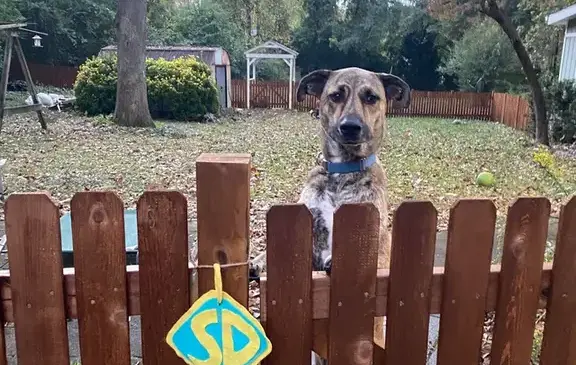
Pros
Cons
Metal fences
Metal fences are a common type of fence for dogs. The sturdy nature of metal, whether it is wrought iron, aluminum or any other type of metal, creates an alarming barrier for your furry companion. It prevents your dogs from escaping and keeps unwanted intruders out to make a comfortable environment for your pet.
Metal fences provide lasting longevity. You can make use of them for years without breaking the bank on heavy maintenance. This durability makes them a long-term investment.
Metal fences have a variety of styles and designs available like sleek aluminum panels or wrought iron. You can make the best choice as per your convenience and the house’s aesthetic look.
Some metal fences are seen through and some are covered with metal panels. It depends on your own choice and your pet’s habits, what kind of fence you chose.
The customization of metal fences can easily be made by which you can choose the height and spacing of rails or select decorative elements to make it more presentable and appealing as you like.
As the steel material has high conductivity, it can be dangerous in extreme weather conditions if an electric current passes through the fence.
Unlike wooden fences that require regular painting or sealing, metal fences require low maintenance. They can easily be washed with water and soap to maintain their integrity and appearance.
As compared to complex materials like stone or brick, metal fences are easy and straightforward to install. You should seek professional installation for its optimal effectiveness.
The gate integration can give your metal fence a broad and tidy look. You should match the style and features with the gate for a more charming look. There are also coating options available to this type of fence for dogs.

Pros
Cons
Picket fences
Picket fences are installed by putting wooden sticks straight with equal intervals. These sticks are generally painted white and commonly have sharp edges. These types of fences are famous for their charming and classic look.
Picket fence provides a physical but visible boundary. It can be good for the dogs who feel isolated and want to interact with the outside world.
If your pet has good jumping abilities, then you should opt for some other type of fence as picket fences are not feasible for larger or more energetic breeds. They are good for smaller dogs or puppies that are not used to jumping.
Picket fences are easy to clean. Regular cleaning and occasional painting serve the task done.
If your dog is habitual of scratching or chewing upon, then this type of fence will require additional cost for the repair and maintenance of the pickets.
Precision and perfection is needed for the installation of the picket fence because negligence in equal spacing of the sticks might deteriorate your house’s outlook.
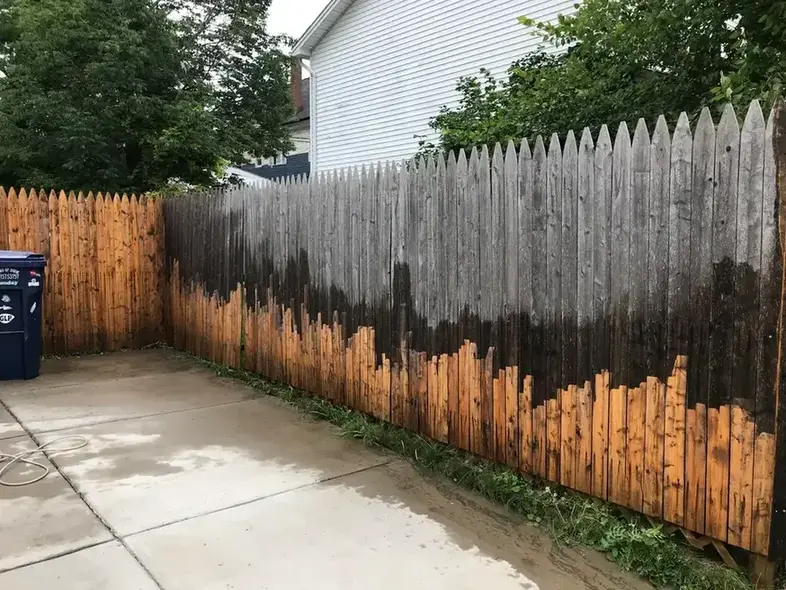
Pros
Cons
Wire mesh fence
A steel fence consisting of wire strands electrically welded together to form a high-strength mesh is a wire mesh fence. These fences are properly ventilated as there is air circulation.
Wire mesh fences are flexible. They can be installed easily with proper measurements according to your property’s layout.
These are reasonable in price and can be used by anyone even tight on budget. These fences provide enough security for your dog as wire mesh prevents dogs from digging underneath.
You can easily customize the fence according to your dog’s size and height. These fences are relatively more visible than other types of dog fences allowing your dog to see and be seen from outside.
Breeds with climbing nature can attempt to climb and get hurt if you fail to measure a tall wire mesh fence.
If wire mesh fences are not properly maintained, they can protrude sharp edges that can be dangerous for your dog.
These can be somewhat noisy if your dog tries to jump or scratch with the fence. it may cause disturbance to you or your neighbors.

Pros
Cons
Snow fences
Snow fences are primarily designed to slow down the wind and ultimately drop the snow but they can be used as one of the types of fences for dogs in certain temporary conditions. These are typically made from plastic mesh or wooden slats.
Snow fences can be a possible and cost-effective solution where a permanent fence is not feasible or necessary. These can be easily installed, especially good for renters who need it for a shorter period of time.
Snow fences are discrete and not aesthetically pleasant. These are see-through and do not provide enclosed privacy to dogs that prefer more enclosed spaces.
These types of fences do not withstand extreme decay or damage. They might not be as significant in the regions where there is less snowfall.
Overall, if you are in need of a reliable and permanent fence for your dog, a snow fence would not be my recommendation. If you still decide to use a snow fence, you should ensure its proper installation and maintenance.

Pros
Cons
Split rail fences
Split rail fences were basically designed to manage a large number of livestock. Rails were split from logs with hammers and wedges and then stacked in a zig-zag pattern.
These fences come in different styles and designs. You can make a straight fence or you can put the wooden logs in a cross model. You can connect two or three rails with the wooden posts, as per your need and choice.
I like the look of the split rail fence in big yards. It is really a good option for you if you are tight on your budget.
The Open design of these fences provides a wider look and does not get your dog enclosed in a cover area. This can be a negative point if your dog is an introverted type. So it all depends upon your dog’s behavior.
It requires low maintenance and can last for years due to its wooden material. If privacy is a concern, it may not be a good option for you.

Pros
Cons
Wireless dog fence
This is a modern type of fence for dogs. It is an aesthetically pleasant way to make boundaries for your pet without any physical obstruction to your property.
It works on the idea of the combination of a central transmitter and a receiver collar worn by your dog. Whenever your dog approaches the boundary, the collar emits warning signals.
The basic requirement to install a wireless fence is the proper training of your dog. It might not be suitable for some aggressive breeds.
Since it does not have any physical barriers, it is aesthetically good for your property. The problem that I personally feel with this fence is that you cannot stop other animals from coming inside the fence but just can restrict your own pet within the area.
It provides you with a modern look and customization options. It is portable, good for renters or people who do not want a permanent fence.
Some dogs may be resistant to static corrections that might not be good for their well-being.
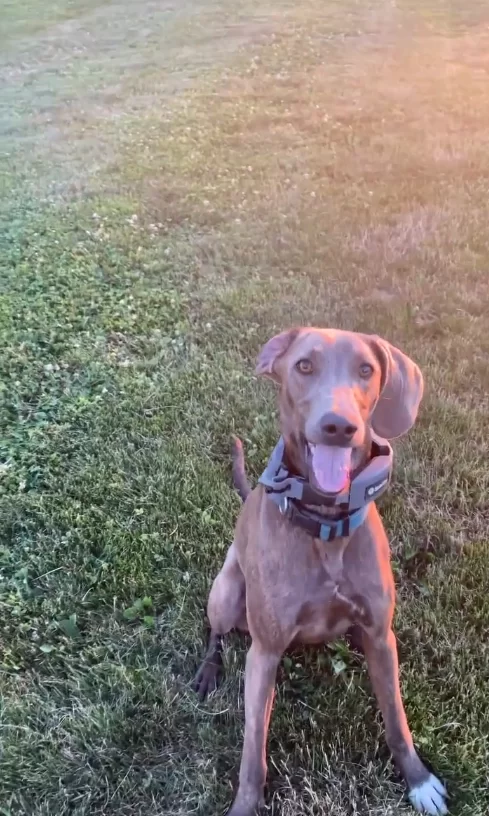
Pros
Cons
Brick fence
A brick fence is a durable and more secure option for the dog owners who seek more privacy and aesthetic appeal. This fence is made from masonry blocks, bricks or concrete blocks or natural stones depending upon your choice and budget.
Once installed, these fences can last for decades with minimal maintenance. This can be an advantage as well as a drawback, in my opinion, because you cannot modify or alter the designs, since this fence is constructed rather than installed.
A brick fence provides your dogs a quiet and private space as there comes very less noise from outside due to its strong material.
A well constructed brick fence can add value to your property also as it is an additional feature to any property.
Bricks are heavier in weight than any other material like wood or steel, so it requires extra effort and time for proper footing and support.
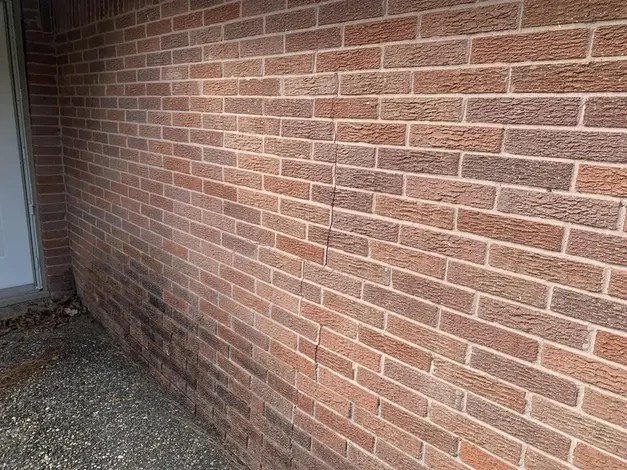
Pros
Cons
Portable fence
As the name suggests, portability is the main feature as well as the key advantage of this type of fence for dogs. It is a flexible and temporary solution to the dog owners who are rented or do not require any permanent boundary.
These fences are easy to install and remove with minimal efforts and tools making them a convenient option for temporary needs. You can provide a change environment to your pet with this type of fence.
This is a cost effective choice as compared to other permanent fences. The portable material is not usually as sturdy as any other material, making it less secure than other types of dog fences.
This is fruitful mostly for puppies and less aggressive breeds. This may not be suitable for all kinds of homes. Portable fences require periodic maintenance and cleaning in order to make them functional and secure for your pets.
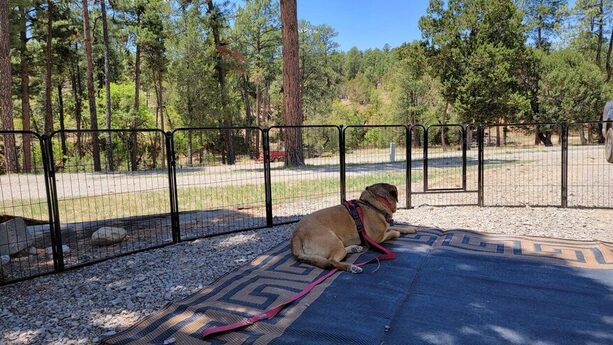
Pros
Cons
Indoor dog fence
Indoor dog fences are designed to keep your pet more secure inside your house and also restrict it from going to rooms or near furniture where it is not allowed to go.
Indoor dog fences may or may not be wireless depending upon your choice and your pet’s needs. Wireless indoor fences provide your home with a more tidy interior look while the indoor fence with physical barrier also looks secure and modern.
These fences come in various styles, designs and colors to give you choice to match it with your furniture or interior. I like the hexagon shape the most. Puppies look really cute in such fences.
It is important to assess your dog’s training and temperament before using this type of fence. These types of fences for dogs may get interrupted with other electronic devices installed in your home.
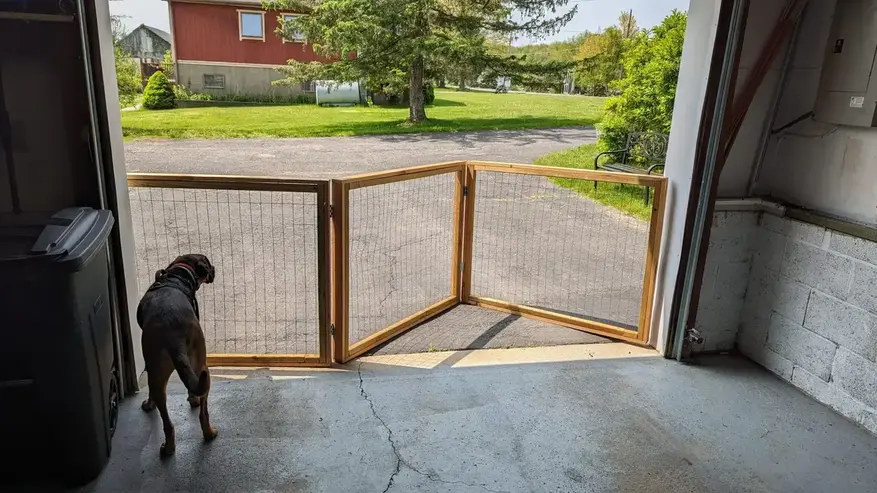
Pros
Cons
Invisible fence
An invisible fence is designed to confine your pet to the designated area without installing physical barriers. This works with a system of an underground wire and a collar worn by the pet. On approaching the boundary, your dog may get static correction.
It may or may not be a wireless fence depending on your own choice. You can use satellite interventions also in place of the hidden wire that can be controlled with GPS.
The invisible fence can be customized, easy to install and it has no visual impact. It depends on the functionality of the COLLAR also and a proper training should be given to your pet beforehand.
Pros
Cons
You might be interested in: Explore the world of rarest Shih Tzu colors and their uniqueness.
How to Choose the Best Fence Type for Your Dog?
Pet dogs are cute little pals who require care and love. Providing them with a proper fence is the foremost step for their safety.
Choosing the best type of fence for your dog with so many options available becomes a challenging task sometimes.
In my opinion, there must be some factors to keep in mind before making a decision. These are listed down below for your convenience research.
Assess Your Dog’s Needs
Every dog breed may not be the same therefore their needs and requirements also differ. You must consider your pet’s needs and behavior before choosing the type of fence. Prior assessment will save you from further problems.
Check Local Regulations
You must check local regulations of the community where you live. Some societies lay out the rules for installing fences like their height, materials, placements and even appearance. Considering this factor beforehand may save you from any further legal actions.
Define the Purpose
The purpose behind installing a fence is equally important. You should have a clear question in your mind: Why are you installing the fence? Whether it’s for the environmental change for your dog? Or is it a security matter ? or do you want an aesthetic change only? This will help you choose the best type of fence for dogs.
Consider Fence Height
Some dogs are prone to jumping or scratching. You should know your pet’s behavior well before investing in the fence. Fence height is necessary to take into account if your pet is habitual of jumping while maintaining the look of your outdoors also.
Evaluate Fence Material
I think It is the most important factor to consider. The material of the fence must comply with your pet’s and your needs. Durable fences are off course a wise choice to avoid damages and further maintenance costs.
Avoid Gaps and Digging Opportunities
Selecting a fence that is solid and secure, without weak points that could lead to escape or digging behavior is a challenging task. This consideration ensures your dog’s safety, containment, and overall well-being.
Factor in Visibility
Having physical and invisible choices of fences in the market is really a blessing. You may decide or choose whatever option fits for the needs and interests of your pet. Both options have their own advantages.
Safety Concerns
A very important and necessary factor to consider is the safety concerns for your pet. A fence will not serve the purpose if your furry companion does not feel secure and safe from external factors. You must have that mind which type of fence will be safest for your dog.
Budget
You must consider your budget that fit your needs and requirements. Invest wisely with proper research and make a good decision in buying the best fence for your dog without breaking the bank.
Consult a Professional
Although we come across thorough research articles regarding types of dog fences on the internet with ample knowledge, consulting a professional can save you time and money. I think it is a necessary step before making a purchase.
What type of fence is most popular?
It is tiring research to make with so many varieties available in the market. Although wooden fences are considered the most popular type of fence as Google says, I think it may vary according to one’s needs and preferences, location, and practical needs.
The Physical Fence vs the Invisible Fence
The choice between a physical fence and an invisible fence depends on factors such as your dog’s behavior, your property’s layout, your aesthetic preferences, and your training commitment.
Physical fences provide a tangible and often more reliable barrier, while invisible fences offer aesthetics and less obstruction. Before deciding, consider your dog’s needs, your property’s requirements, and your long-term goals for containment and security.
Why Use a Fence For Your Dog?
After reading the complete article, you must know the answer to this obvious question but it is my compelling appeal to use a fence for your dog, by putting this question at the end.
Fences provide security, privacy, and a proper environment to your pet that is good for its well-being. Choosing the right type of fence for your dog is now a stimulating task for the dog owners.
FAQs
What is the strongest type of fencing?
The wrought iron fence is the strongest and most long-lasting fencing option available.
Which fencing is the easiest?
Split rail fences are easy to install after the portable fences that do not require any tools.
What is the best fence height?
It depends upon your location of the fence. If you are installing it in the front yard, it should be around 4 feet tall and if it is in the backyard, then 6 feet can serve the purpose easily.
How to make a cheap dog fence?
Metal wire fences and wooden fences are both a cheap option.
What material is better for a fence?
Aluminum and vinyl fences are 100% immune to rotting and decaying. Although brick fences are durable and last for decades.
Wrapping Up
Every type of dog fence has its own pros and cons. It can be chosen considering certain factors like the dog’s behavior and environmental aspects.
Wooden fences offer privacy and aesthetic appeal, while chain-link fences provide visibility and durability. Vinyl fences require minimal maintenance and can withstand different weather conditions.
Invisible electric fences are invisible but effective, using a collar and an underground wire to create a boundary. However, they require consistent training for the dog to understand the boundaries.
Ultimately, the ideal fence type balances your dog’s safety. Prioritize the dog’s well-being, ensuring the fence’s height, material, and design. Regular supervision and training are crucial regardless of the fence type chosen.
Consulting with a professional and considering your dog’s specific requirements will guide you toward the most suitable fence for your furry companion.
